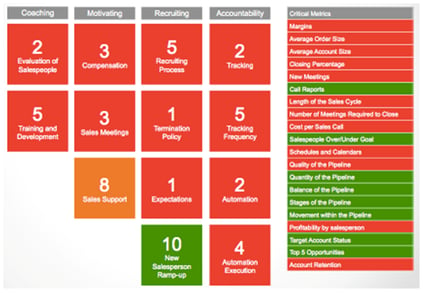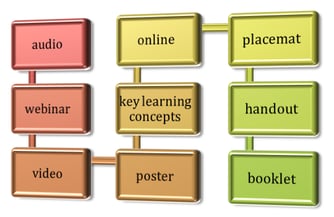
I’ve been writing about solutions to variability of performance and, as often happens, I see/find something connected to the theme of sales or sales management.
Earlier, I discussed three reasons for variability of performance:
- Situational Factors
- Task Characteristics
- Individual Differences
Dr. Peter Jensen, sports psychologist, founder of Performance Coaching, instructor at Queen's School of Business, Canadian Olympic Coach and author of Ignite the 3rd Factor, states the following:
“The developmental potential of human beings has three major components: nature, which establishes the physical and mental road map of an individual; nurture, which includes social and environmental factors that help would an individual; and the Third Factor, which is the factor of choice or "the important role an individual plays in his or her own ‘becoming’.”
Nature, nurture and The Third Factor define individual differences.
I was taking my morning walk when I noticed a young boy and what appeared to be his dad riding their bikes in the cemetery across the street from our house. The boy seemed to be enjoying himself and feeling the excitement of peddling his bike faster and faster. I turned my attention back to my walk and then looked back one more time. I noticed the young boy on the ground, his bicycle a few feet on the ground away from him and his dad dismounting from his bike. It appeared that the boy had tried to take the corner too fast, lost control of his bike and fell.
I stopped to watch and make sure that there wasn’t a serious injury. The dad walked over to the boy, bent down and spoke to him. Then he sat down on the ground and the boy moved over to sit on his lap; it appeared the man was checking for any injuries on the boy’s arms, legs and head. All seemed to be well.
I continued walking and then crossed the street like I normally do. I looked over to my right and again saw the man talking to the boy. The boy climbed back on his bike and continued riding. And then I pondered.
The boy didn’t wait until the next day to start riding. He didn’t push the bike back to his house. He didn’t sit there for an hour looking at it, debating if he should try again or not. He didn’t appear to cry or be afraid. He just got back on the bike and peddled away.
The Third Factor at work.
As a sales manager or hiring manager, it is difficult to assess talent. There are many contributing factors that make recruiting difficult. At Hirebettersalespeople.com, we define 8 steps that, when implemented and executed well, can help eliminate hiring mistakes and improve the probability of success once the hire has been made. But, one of the steps – the vetting step (assessing, qualifying and interviewing) – is always challenging because of the human factor.
Specifically, the vetting process is difficult because of how hard it is to determine “the will” to succeed in selling rather than “the can” succeed in selling. The will to sell = The Third Factor. Objective Management Group’s sales talent assessment and pre-hire assessment does the best job of this (Worlds #1 Sales Talent Assessment) with the following findings:
- Desire
- Commitment
- Responsibility
- Outlook
- Figure-it-out factor
- Source of motivation
Why is this important do know? It’s important to know because resumes and application answers are great works of fiction. Over the last 22 years in this business, I’ve seen the development of resumes go from a bullet-pointed document about the history of a candidate to a short story of great accomplishment and adventure. There are no “bad” resumes anymore.
When you calculate the cost of bad hires, hires that don’t produce as expected, hires that are there and then gone in a blink of an eye (calculate the costs of ghosts), the problem can be, as Roy Riley described it, a two-comma problem. Yes, you want people that have the required technical expertise; yes, you want people that have experience in your industry; and yes, you want people that have experience selling in your environment and have success selling to prospects you are looking to sell to.
But, if you don’t know exactly how they have succeed in the past, if you don’t know if they are wired to sell and help your company grow, if you don’t know the “third factor” choices they make to succeed in spite of all external factors, then you will continue to fall victim to hiring people that fall off the bike and have a difficult time getting back on the seat.
Additional Resources:
Assess a candidate








